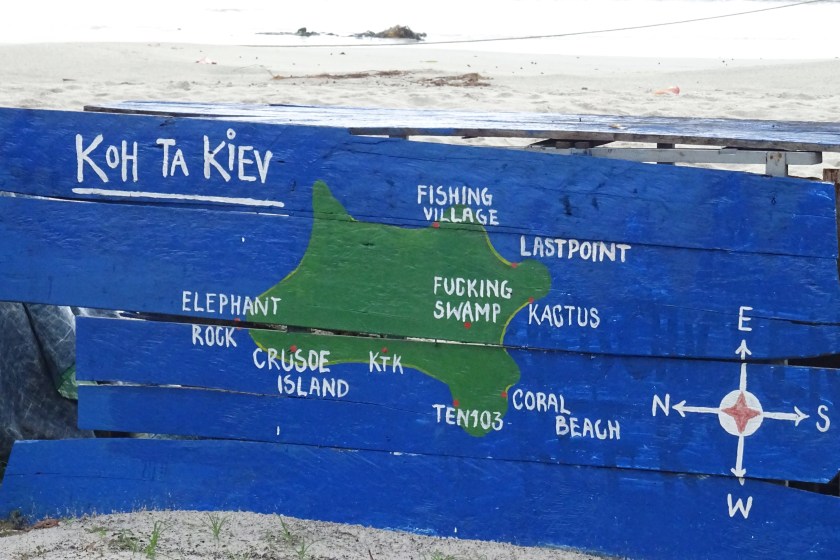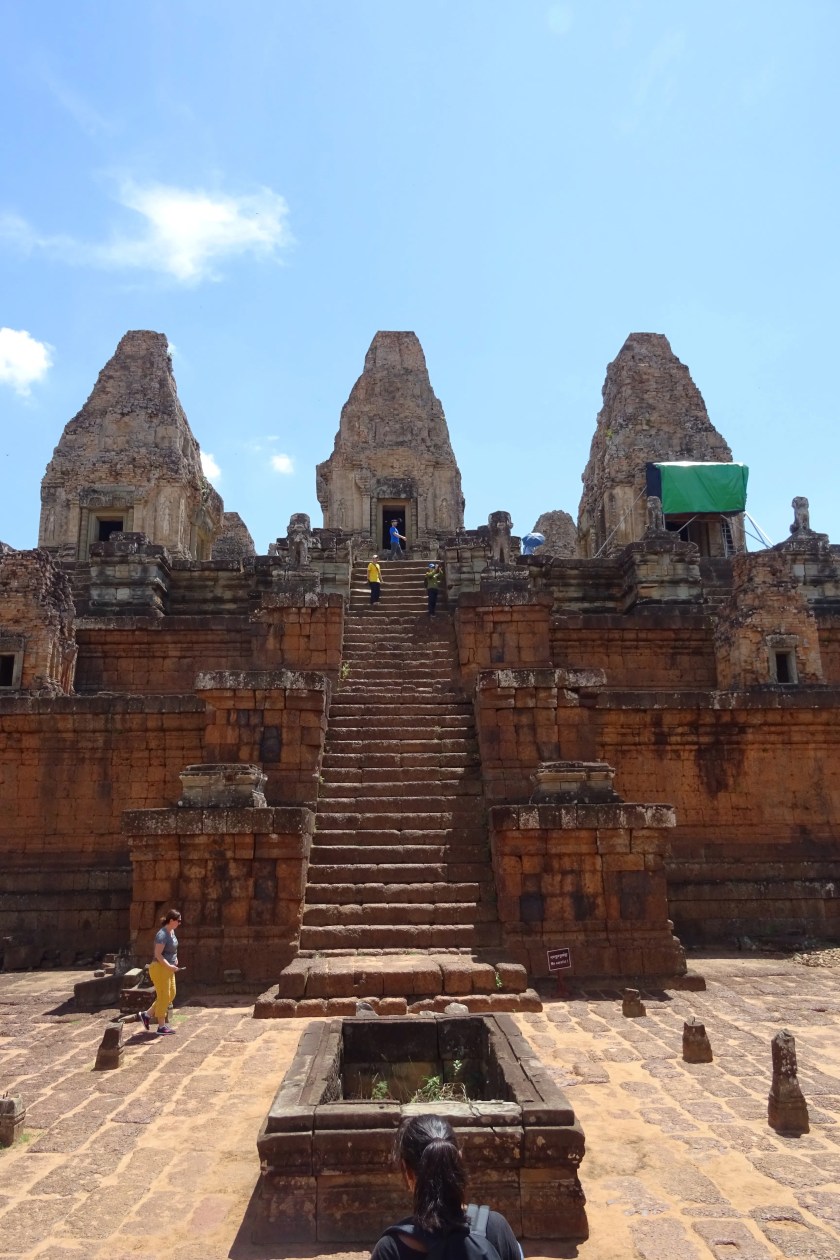On my first full day in Phnom Penh I visited the infamous Killing Fields and the Tuol Sleng Genocide Museum (commonly referred to as “S21” standing for Security prison number 21 – there were over 150 of them). It’s been more than 12 days since I visited these two places and everyday I seem to think about them more and more.
I thought I would start by briefly explaining what led to the use of the security prisons and killing fields before reflecting on how they affected me. Be warned that this may be quite a long post – the visits have had more of an effect on me than I ever could have imagined.
A brief history
Cambodia’s Civil War that started in 1970 ended in 1975. On 17th April 1975, under the command of Pol Pot and the Khmer Rouge regime, Cambodia’s capital city, Phnom Penh, was evacuated and its 2.5 million residents were sent to labour camps in the countryside. Those evacuated quickly became known as the 17th of April people. Pol Pot and the Khmer Rouge wanted to turn the country into a communist agrarian utopia. The year they came into power became their ‘Year One.’ Pol Pot wanted agricultural output to double in 4 years, a completely unrealistic goal, and banned private properties turning them into collective farms to enable this. With no experience of harvesting crops many failed to produce the amounts they were required to grow (3 tonnes of rice per hectare). Most of the workers worked for 19 hour days and many thousands died from starvation and heat exhaustion whilst working in these labour camps. In these labour camps family relationships were banned as the Khmer Rouge believed that parents were exploiting their children.
The Khmer Rouge also banned religion and anyone found to be practicing Budhhism was immediately executed. Those Cambodians who were educated, could speak French or other foreign languages, were rich or wore glasses were sent straight to the security prisons to be tortured before being sent to the killing fields. The Khmer Rouge thought these people may have connections with foreign governments and had the potential to overpower the Khmer Rouge and so must be killed after being tortured to find out what they knew.
When people were thought to be a threat they were taken to security prisons to be tortured. Their photo would be taken on arrival and meticulous records were kept of prisoners. Prisoners were often forced to write false confessions that fitted whatever crimes they had been charged with which were often thousands of words long and mostly fabricated. They would name family and strangers alike and make up the names of political parties they supported and had connections with. The methods of torture are painful to think about. S21 (Tuol Sleng) was a high school before it became a prison. As such the guards used what had been a climbing frame for pupils as a way to torture prisoners. They would be suspended upside down until they passed out and then dipped into a barrel of human faeces until they regained consciousness when the whole thing would be repeated again. In some respects this was not that bad. Other methods included water-boarding, ripping out people’s fingernails whilst simultaneously dousing their fingers in alcohol, routine beatings by often 4 or 5 guards at a time and the use of electric shocks. Guards sometimes raped female prisoners but as this was against policy if they were found out they too would be executed. If a prisoner died before their confession was signed then the guard deemed responsible would be imprisoned. As the Khmer Rouge had most doctors executed, some guards were given basic medical training to try and keep prisoners alive. At the same time though, prisoners were experimented on much like the Jews were in WW2. They were cut open and their organs were removed with no anaesthetic and some prisoners were attached to IV pumps and every last drop of their blood was removed to see how long they would take to die.
Much to my surprise some foreigners were also imprisoned at S21. One of these was New Zealander Kerry Hamill, who along with fellow sailors Canadian Stuart Glass and Englishman John Dewhirst, were captured by the Khmer Rouge when their boat sailed into Cambodian waters during a storm. Kerry’s confession is laced with humour and clues for his family. He wrote that Colonel Sanders (of the chicken fame) was one of his “superiors”, the home number in Whakatane was his CIA operative number and scattered through as members of the CIA are family friends – Colonel Perram was Miles Hamill’s gliding instructor, Captain Dodds was an old friend of Kerry’s from Whakatane. The public speaking instructor, “Mr S. Tarr”, was Esther (his mother), Kerry says. Kerry’s youngest brother remarks “He was sending a message to our mother. A message of love and hope. And it was as if whatever the final outcome, he would have the last say.”
When confessions had been collected, and sometimes straight from their homes, Cambodians were taken in jeeps in the dark of night to the killing fields. They were told that they were being relocated to new homes to prevent them from making any noise. They could never have imagined what atrocities lay ahead of them. When they arrived they were all marched into a dark barn. They could not see each other and were ordered to make no noise. Sometimes they were held in there for a day when the capacity of the fields were at their limit. The number of prisoners executed on a daily basis varied from a few dozen to over three hundred. When they were all in the barn, a light powered by generator was shone on them to verify prisoners against the guards lists making sure that no one had escaped on the way. Music was played at full volume to disguise what happened next. Prisoners were led in small groups to ditches and pits that had been dug in advance. They were told to kneel at the edge of the pit before the were brutally killed with various tools; a cart axle, hoe, stick, wooden club or whatever else was around. Sometimes their throats were slit with the rough edges of palm leaves. Bullets were deemed too expensive and the sound may have aroused suspicion outwith the high walls. Babies were killed by having their heads smashed against trees after which they were thrown into a pit with their naked, dead mothers. The reason Pol Pot gave for killing children was this;
“To dig up the grass, one must remove even the roots.”
He believed that the children of those he killed would inevitably seek revenge on those who were responsible for their parents deaths so he removed this possibility entirely.
When you visit now you can still see fragments of bones in the ground. When the fields were first discovered skulls and large bones such as the femur were removed from the ground to be examined. The skulls are now housed in a memorial stupa with tags to show how each individual was killed. Every time it rains, new bones and clothes are brought to the surface of the ground. It has been decided to now leave these clothes and bones as they appear. It is haunting to look at.
3 million people were killed during this genocide. At the time the population of Cambodia was just 8 million (it is now 15.7 million). More than 1 in 4 people were killed in a 4 year period. Another of Pol Pot’s “mottos” was this
“Better to kill an innocent by mistake, than to spare an enemy by mistake.”
In 1979, Vietnam invaded Democratic Kampuchea and toppled the Khmer Rouge regime. Pol Pot escaped and did not die until 1998.
In 1997, the Cambodian government asked for the UN’s assistance in setting up a genocide tribunal. It was 9 years before judges were sworn in in 2006. 5 suspects were presented by the prosecution on July 18th 2007. On September 19, 2007 Nuon Chea, second in command of the Khmer Rouge and its most senior surviving member, was charged with war crimes and crimes against humanity. He faced Cambodian and foreign judges at the special genocide tribunal and was convicted on 7 August 2014 and received a life sentence. On July 26, 2010 Kang Kek Iew (aka Comrade Duch), director of the S-21 prison camp, was convicted of crimes against humanity and sentenced to 35 years’ imprisonment. His sentence was reduced to 19 years, as he had already spent 11 years in prison. On February 2, 2012, his sentence was extended to life imprisonment by the Extraordinary Chambers in the Courts of Cambodia.
My reflections
One of the most shocking parts of this story for me was that no where else in the world knew this was happening. Dignitaries from many countries visited Cambodia during this time and had no idea what was happening just a few hours from them. Pol Pot and the Khmer Rouge disguised this genocide from the world and Pol Pot even represented Cambodia at a UN meeting.
What scares me most is knowing that this isn’t the only genocide to have happened in the world and it almost certainly won’t be the last. As you leave the killing fields, the audio guide says something along the lines of “Now you have learnt about the genocide here, it is your job to educate those you know about it and it is your responsibility to make sure it never happens again.” I think that’s what really left me stumped. A few days after, I was talking to my Dad on the phone and I was saying that I don’t understand how I as an individual can prevent something so atrocious from happening. I thought maybe you could be an aid worker but then you’re only really patching up the damage, you aren’t stopping the cause. If anyone has any ideas on how we as individuals can prevent genocide then I would love to hear them because right now I’m really struggling with my place in the world and my new found responsibility to prevent such things happening again.
I’m sorry that this post has been so long and potentially difficult to read. I hope that those of you who knew little or nothing about the Cambodian genocide have learnt from this post.
I will leave you with the most haunting expression I heard whilst at the killing fields. I will never forget it and it has been playing repeatedly in my mind ever since. It was first said by Pol Pot and became a motto for the Khmer Rouge. I think it is the worst possible thing that one human being can say about another.
To keep you is no gain. To lose you is no loss.
































































